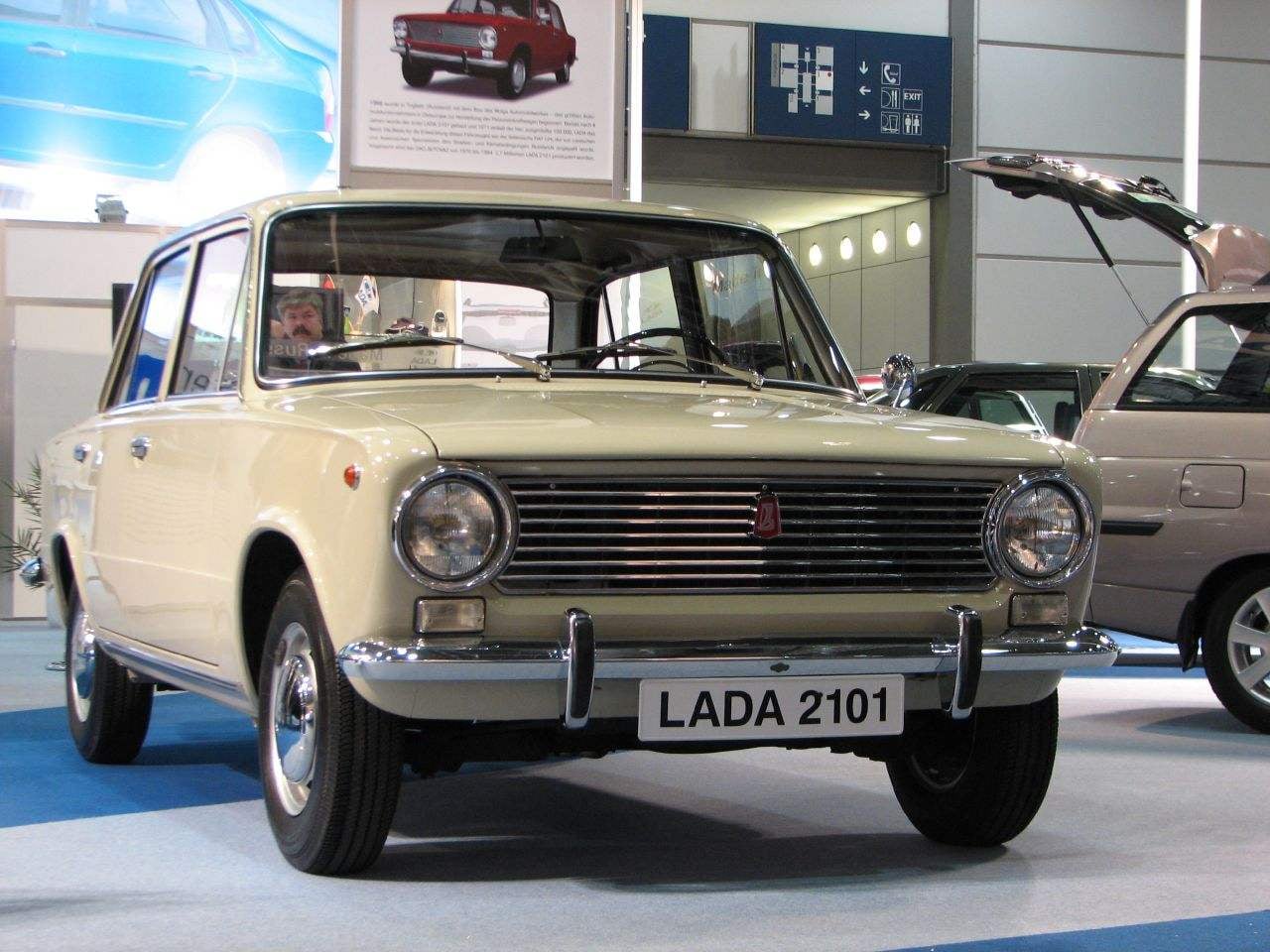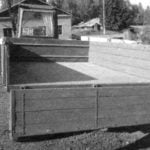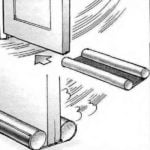
 Mass Soviet car VAZ-2101. In the early postwar years the car fleet in the country has increased dramatically this occurred both at the expense of production of cars “Moskvich-400” and “Victory” M-20, and because of the reparation receipts of vehicles from defeated Germany. In the country for the first time appeared quite a large number of cars in private use of citizens. And the more familiar Soviet people with the pleasures of owning a car, the more it became a circle wishing to possess this miracle of technology.
Mass Soviet car VAZ-2101. In the early postwar years the car fleet in the country has increased dramatically this occurred both at the expense of production of cars “Moskvich-400” and “Victory” M-20, and because of the reparation receipts of vehicles from defeated Germany. In the country for the first time appeared quite a large number of cars in private use of citizens. And the more familiar Soviet people with the pleasures of owning a car, the more it became a circle wishing to possess this miracle of technology.
However, the repair proceeds quickly enough dried up, and the production capacity of the MZMA and the Gas is not allowed at least to some degree to provide even the part of the population, whose income was given the opportunity to purchase vehicles for personal use. The machines were distributed to businesses, and to get the right to buy a car, had to wait a few years. The situation has improved with the introduction of Zaporizhia automobile building plant (ZAZ), however, with his participation, the total production of cars in the USSR in the early 1960-ies was about 150 000 copies, and in the retail chain fell only 40 percent of this amount.
Preliminary estimations showed that the country needs at least 1 million cars, but to organize the production of so many cars through the rehabilitation of existing plants was impossible. I needed one more plant, capable of producing around 700,000 cars a year. The most quick and qualitative way of solving this problem could be to purchase from reputable foreign car manufacturing firms of the equipment, documentation on modern production technology and the license to produce a modern car.
This firm became the largest Italian concern FIAT. It should be noted that the automaker is very successfully sold businesses and licenses not only to the Soviet Union and several other countries. So, in 1967, in Poland at the FSO car plant started serial production of the car, called the Polski-FIAT-125R, and FIAT-124 successfully produced until recently in Turkey.
The agreement on scientific and technical cooperation was signed on 4 may 1966 in the city of Turin by the Minister of automotive industry of the USSR A. Tarasov and honorary President of FIAT. Soon after the delivery of the equipment and technological documentation for the production of the FIAT 124, which in 1967 was recognized as the best car of the year. For construction of the plant allocated space in the city of Stavropol-on-Volga, later to be renamed Togliatti. Grandiose construction of the new plant began almost immediately after the signing of the agreement, in 1966, and in early September 1970, the first batch of new cars.

Five-seat four-door car-a sedan VAZ-2101 “Lada”

Serial production of the Polish “Italian” Polski-FIAT-125R began in 1967, three years before the domestic VAZ-2101
When domestic “Italians” appeared in Moscow — elegant, cherry-brown, with a matte protective wax coating — Soviet motorists have experienced a serious shock. A new, truly mass-market car was a real car — it is modern, fast, dynamic, devoid of the heaviness of “Moskvich” and not serious lightness “Zaporozhets”, reliable, low noise — in short, the same pipe dream that was about to come true!
It was a VAZ-2101, inadvertently chosen the name “Lada”. Not only that, the name could be used only in the plural, forcing motorists to invent a very strange grammatical construction (“Lada” raced “Lada” turned, etc.). In several European languages, it was consonant with the infamous word “gigolo”, virtually eliminating for machine foreign supplies. I had to export VAZ-2101 to come up with quite euphonious pseudonym of “Lada”, which became in 2004 the only brand for all cars VAZ.
I must say that when defining with the Italian partners the configuration of the future leader of domestic car industry in the design of the FIAT 124 was made a lot of changes. Thus, the Italian prototype was equipped with outdated engine model 1937 with a top drive valves, push rods, and for “Lada” were chosen a more modern overhead valve motor overhead camshaft driven by a crankshaft double row chain. In addition, disc brakes on wheels of the rear axle was replaced on the drums, more suitable for Russian roads. Was also reinforced body — now the car was not terrible and the rural dirt road.
VAZ-2101 is a classic three-box four-door car is a sedan with the leading of the rear wheels and the front engine.

Engine type VAZ-2101 with verhneraspolozhennyh camshaft displacement of 1198 cm3 and a power of 60 HP.

The geometric scheme of the car-a sedan VAZ-2101 “Lada”

The layout of the chassis of the car VAZ-2101

The basic elements of the carrier of the car body

The front suspension of the car VAZ-2101 — independent, wishbone with coil springs, telescopic shock absorbers and stabilizer bar

The rear suspension of the car VAZ-2101 — dependent, with a rigid beam connected with a body of one transverse and four longitudinal bars, with coil springs and hydraulic telescopic shock absorbers

The geometric scheme of the car-station wagon VAZ-2101 “Lada”
All body panels were connected by spot welding, including the wings. The latter fact was at first seriously puzzled motorists and tinsmith-tinsmith, accustomed to the fact that, before the VAZ-2101 on all cars mounted body parts were fastened by bolts and nuts, which significantly simplified the repair. Well, to replace the wings on the car “the Zhiguli” it was necessary to master argon or carbon dioxide arc welding.
The gutter of the roof was lined with a metallic strip, and the threshold body — chrome plate. Metallized moldings are used and when the trim of the rubber part of the seals windshield and rear window.
The car’s interior was extensively used synthetic materials that mimic the skin. Thus, the front panel is molded from soft plastic with black matte finish. Such plastics were also used in finishing of doors. In the upper part of the windscreen located rear view mirror having two fixed positions, allowing the driver to avoid the glare of headlights behind your vehicle. Additional rear view mirror mounted on the left front fender.
The Central place of the dashboard held the speedometer, it is located a pointer coolant temperature, fuel gauge in the tank, and also warning lamp turn indicator, brake fluid level in expansion tank, oil pressure and the lamp of the gearshift hand brake.
The hood of the engine compartment opened from inside the vehicle by a handle under the instrument panel; trunk lid key, the lid is leaned automatically. And under the hood and in the trunk mounted lights, zagorevskaya when opening the lids.
The basis of the power unit of the car was a petrol 4-cylinder gasoline engine power 58 HP and a working volume of 1200 cm3. The degree of compression of the working mixture was 8.5, was used as fuel while unusual for Soviet motorists gasoline AI-93.

Sporty VAZ-2101 — prize winner at the Races historic cars in the Nurburgring (Germany) 2004
By the way, in an effort to reduce the cost of operation of the machine has made the most heroic attempts to improve the octane number of the cheaper and more common 76 octane gasoline — one of the popular measures was an additive in fuel normal… naphthalene. More severe method was to lower the compression ratio of the engine by using a thicker gasket between the head and the cylinder block or special futuros — transition bushings that are installed between the head and the spark plugs. However, the majority of owners are still getting used to the regular fuel, in which the company was smaller, and the power of the bigger engine.
Car carburetor type Weber 32DCR, emulsion type, two-chamber, with a falling stream. Had balanced the float chamber and the suction system of crankcase gases for the throttle.
Transmission — mechanical, three-way, four-speed, all gears (except reverse) were equipped with synchronizers. The gearshift lever is mounted on the rear end cap of the box and removed through the hatch into the cabin so that his head was located in the vicinity of the steering wheel.
Clutch single disc, dry, with Central pressure plate spring with a vibration damper (damper) on the slave drive. The linkage is provided with a hydraulic servopohony on the pedals hanging type.
Cardan transmission with two shafts with intermediate support. The front was located behind the gearbox and connected with its driven shaft elastic coupling; the rear connected with the front shaft and main gear through universal joints with needle bearings.
Main gear consisted of a pair of gears with hypoid gearing; the gear ratio of the gearing is 4.3.
Front suspension — independent, wishbone with coil springs, telescopic hydraulic shock absorbers and stabilizer bar. The test machine before running it in the series has shown that this suspension ensures a good ride and stability.
Rear suspension — dependent, with a rigid beam connected with a body of one transverse and four longitudinal bars; with coil springs, hydraulic telescopic shock absorbers and a torsion stabilizer. The springs rested on a plate on the beam rear axle and under body. Push forces from the rear axle to the body is transmitted to the longitudinal bars and the lateral force — lateral.
Steering consisted of a steering gear, the gear of which was based on the globoid worm with dvuhgrivnevka roller, and a three-tier steering gear from one medium and two symmetrical lateral rods, and Pitman arm, pendulum and rotary switches. Steering rod joints were protected from moisture and dust rubber cap and grease is not needed — it was laid only during Assembly.

The most popular domestic car VAZ-2101 “Zhiguli” left the Assembly line of the Volga automobile plant in September 1970
The machine generally had a good dynamic qualities overcame in first gear rise with a slope of 36 degrees (at the fourth — to 6.5 degrees), accelerates from a standstill to 80 km/h in 12 s, and to 100 km/h in 20 s. the Maximum speed was 142 km/h average fuel consumption — from 8 to 9 l/100 km.
A very successful design of the car allowed to create on the basis of “Italian” VAZ-2101 lot of modifications, which are available at present.
The first such models were the VAZ-21011 — slightly modified version of the “penny”, station wagon VAZ-2102 — on the basis of the same “Zhiguli”, an improved modification of VAZ-2103, and also becoming especially popular in subsequent years, the six — VAZ-2106. All these cars has been standardized among themselves — by and large, they differ only in the engines and the hinged parts of the body, and at the heart of each was the same “Italian” FIAT 124.
To the second generation of its modifications include the sedans VAZ-2105 and VAZ-2107 and a station wagon VAZ-2104 they All had a more modern body, improved interior trim and upgraded engines. They got an electric fan of a radiator, a belt driven camshaft of the engine and the vacuum brake booster. They are still produced by AVTOVAZ and other Russian companies, however, the age of cars classic layout with rear wheel drive already end.
This year marks 35 years since the release of the Volga car factory first car with a strange name “Lada”. Today a lot of them running around the roads of the country, however, a few years — and “penny” will remain only in museums Yes, in the hands of a frugal fans of such cars. Many consider the design of the VAZ-2101, made in the image and likeness of the “Italian” FIAT 124, most interesting of all the VAZ “classics” — all subsequent upgrading has not improved the appearance of this wonderful machine.
By the way, according to German canons of the car, stepped 30-year milestone, becomes a full-fledged Oldtimer, that is, the Oldtimers. Accordingly, he is entitled to participate in Racing historic cars, held annually at the Nurburgring. In 2004, one of the participants of these starts was a Russian VAZ-2101. To the surprise of the race participants and numerous spectators, restored “penny” 1971 model year with enhanced engine took first place in its class!
Technical characteristics of the car VAZ-2101 “Lada”
Length, mm…………………………………………………4073
Width, mm……………………………………………..1611
Height, mm……………………………………………….1382
Base, mm…………………………………………………..2424
Front/rear wheel track, mm………………………….1345/1304
The number of seats……………………………………………….5
Self weight, kg………………………………945
Full weight, kg………………………………………1345
Payload mass, kg……………………………………400
Ground clearance, mm……………………………..170
Outer turning radius, m 5.5 in…
Maximum speed, km/h…………… ………140
Control fuel consumption, l/100 km………8
Engine capacity, cm3………………….1198
Compression………………………………………..8,8
Maximum power, HP…………………….60
Acceleration to 100 km/h, …………………….20 — 22
Fuel tank capacity, l……………………….39
The braking distance from a speed of 80 km/h, m………34,2
I. EVSTRATOV



